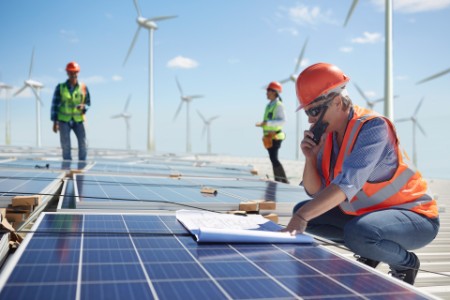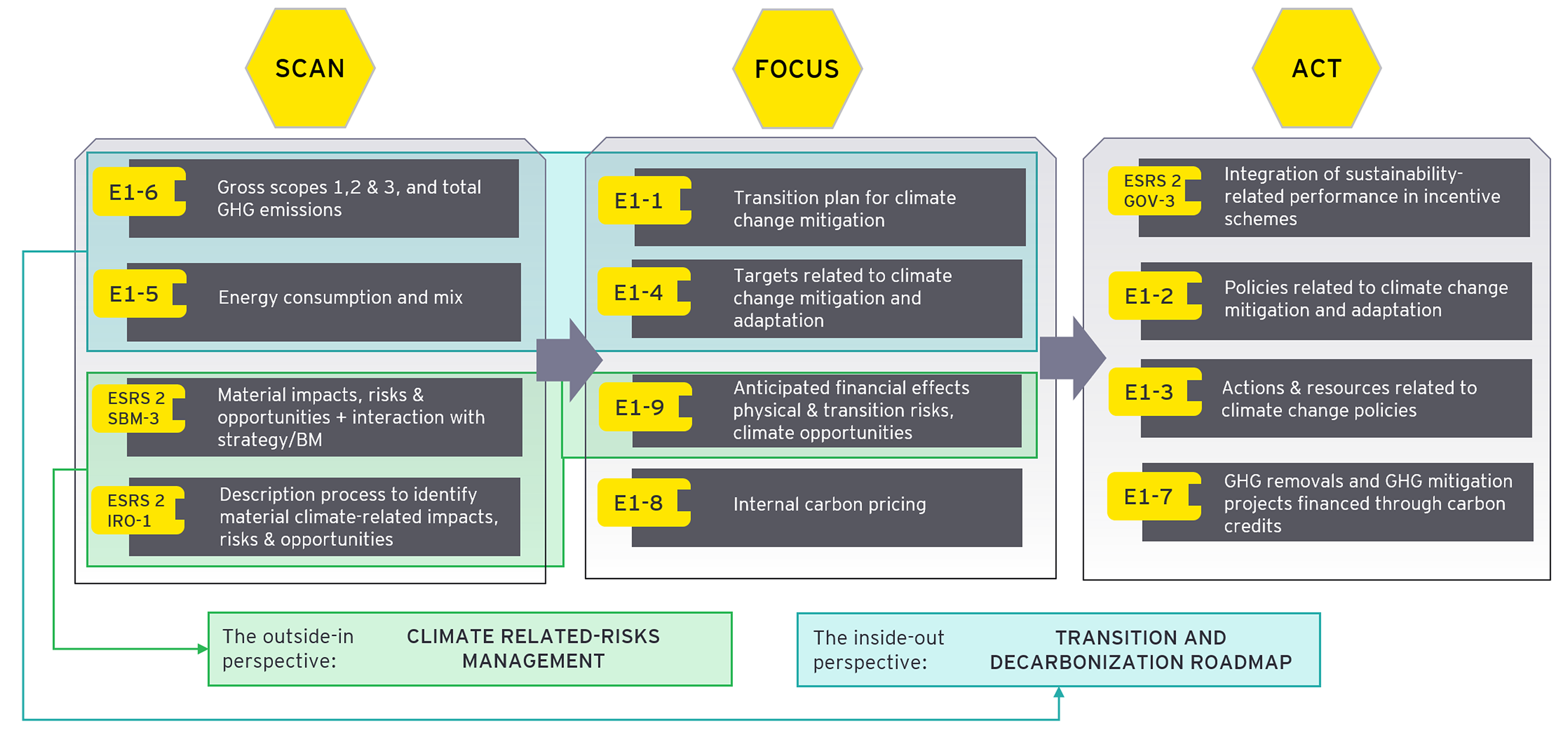The SCAN phase
Initiating the journey toward a more sustainable and resilient future demands a strong beginning, and that's what the Scan Phase is all about— understanding a company's impact on climate change through a robust assessment of its carbon inventory. Key ESRS disclosure requirements guiding the Scan phase include ESRS 2 SBM-3, ESRS 2 IRO-1, E1-6, and E1-5. This initial phase focuses on systematically identifying and assessing the climate-related impacts, risks, and opportunities that are most material to the company. With a comprehensive climate scenario analysis, companies can evaluate the resilience of their strategy and business model in the face of climate change, providing them with valuable insights into the potential physical and transition risks they face, especially in relation to short-, medium-, and long-term trends.
The Scan phase also covers an in-depth carbon footprint assessment, providing companies with a tangible measure of their direct and indirect GHG emissions across Scopes 1, 2, and 3. Alongside, analyzing the total energy consumption and assessing its alignment with the 1.5° target serve as an important components of this stage. If managed effectively, the Scan phase paves the way for a strategically planned and well-informed transition towards climate-positive operations.
The FOCUS phase
The journey continues with the Focus phase, which is crucial in enabling companies to build an effective climate strategy. ESRS disclosure requirements guiding this phase include E1-1, E1-4, E1-8, and E1-9. The process of understanding activities, identifying key decarbonization levers, setting science-based targets, and formulating a decarbonization roadmap is an essential element of the Focus phase. By critically evaluating their past, current, and future strategies, this phase empowers companies to align their business models with the transition to a climate-resilient economy. It aids in building a compelling transition plan that can help in limiting global warming to 1.5°C, thereby aligning with the Paris Agreement and targeting climate neutrality by 2050. It supports companies in setting up ambitious yet strategic climate change mitigation and adaptation policies that address their material climate-related impacts, risks, and opportunities.
Moreover, it provides the opportunity for companies to disclose if they adopt internal carbon pricing and how such schemes support their decision-making processes. Assessing the anticipated financial effects from material physical and transition risks and opportunities forms a crucial aspect of this phase, preparing the company to harness climate-driven opportunities.
The ACT phase
The final step in the process, the Act phase, signifies an inflection point where robust and bespoke climate and net-zero strategies, formulated in the prior stages, are given tangible form. ESRS disclosure requirements at the heart of this stage include ESRS 2 GOV-3, E1-2, E1-3, and E1-7. This phase emphasizes translating the organization's commitment to sustainability into concrete actions, whether it is integrating sustainable practices into incentive schemes, adopting strategic climate change mitigation and adaptation policies, or outlining key actions and resources for achieving set sustainability objectives. Investment in GHG mitigation projects and procurement of carbon credits represent an important aspect of this phase. It allows companies to demonstrate not only their commitment to a more sustainable future but also efficient management of their material climate change mitigation strategies. This final phase effectively allows companies to navigate the path towards a more resilient, more sustainable future, helping them to fulfill regulatory requirements, deliver value to stakeholders, and, most importantly, play their part in global climate action.
Outside-in and inside-out perspectives
Two perspectives emerge from the scan and focus phases of the blueprint to implement E1 DRs in your reporting. The inside-out perspective, put forward by E1-6, E1-5, E1-1 and E1-4, focuses on the transition and decarbonization roadmap and aims to understand the sustainability-relevant impacts of the activities of the company. The outside-in perspective highlights climate related-risks management and aims to understand the impact of sustainability aspects on the company’s business performance, business results and situation. This latter perspective is represented by ESRS 2 SBM-3, ESRS 2 IRO-1, and E1-9. Ultimately, these two perspectives—outside-in and inside-out—also reflect the fundamental principle of Double Materiality Assessment under CSRD, effectively aligning the approach with the regulatory expectation of considering both how environmental factors impact your business and how your business impacts the environment.



